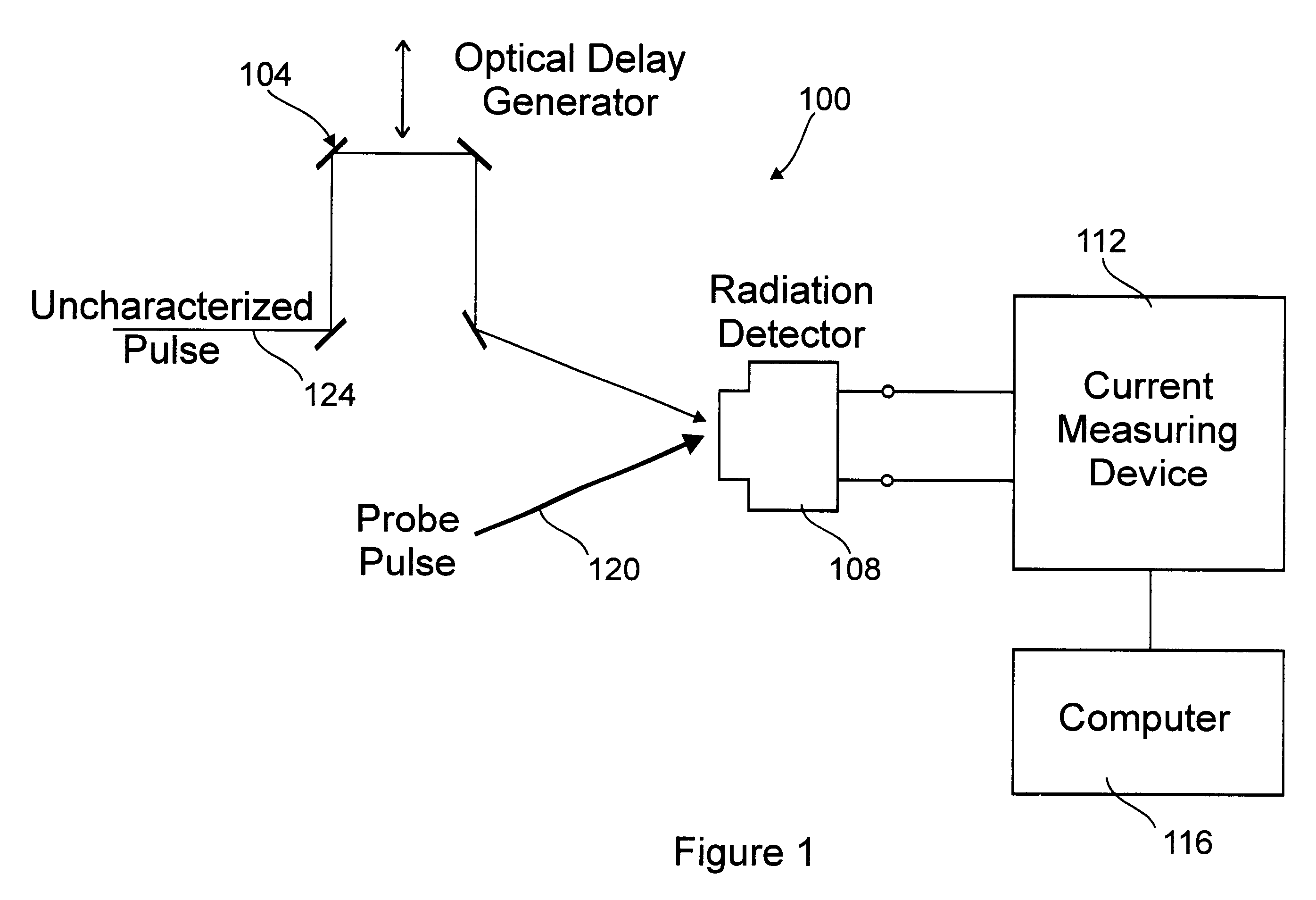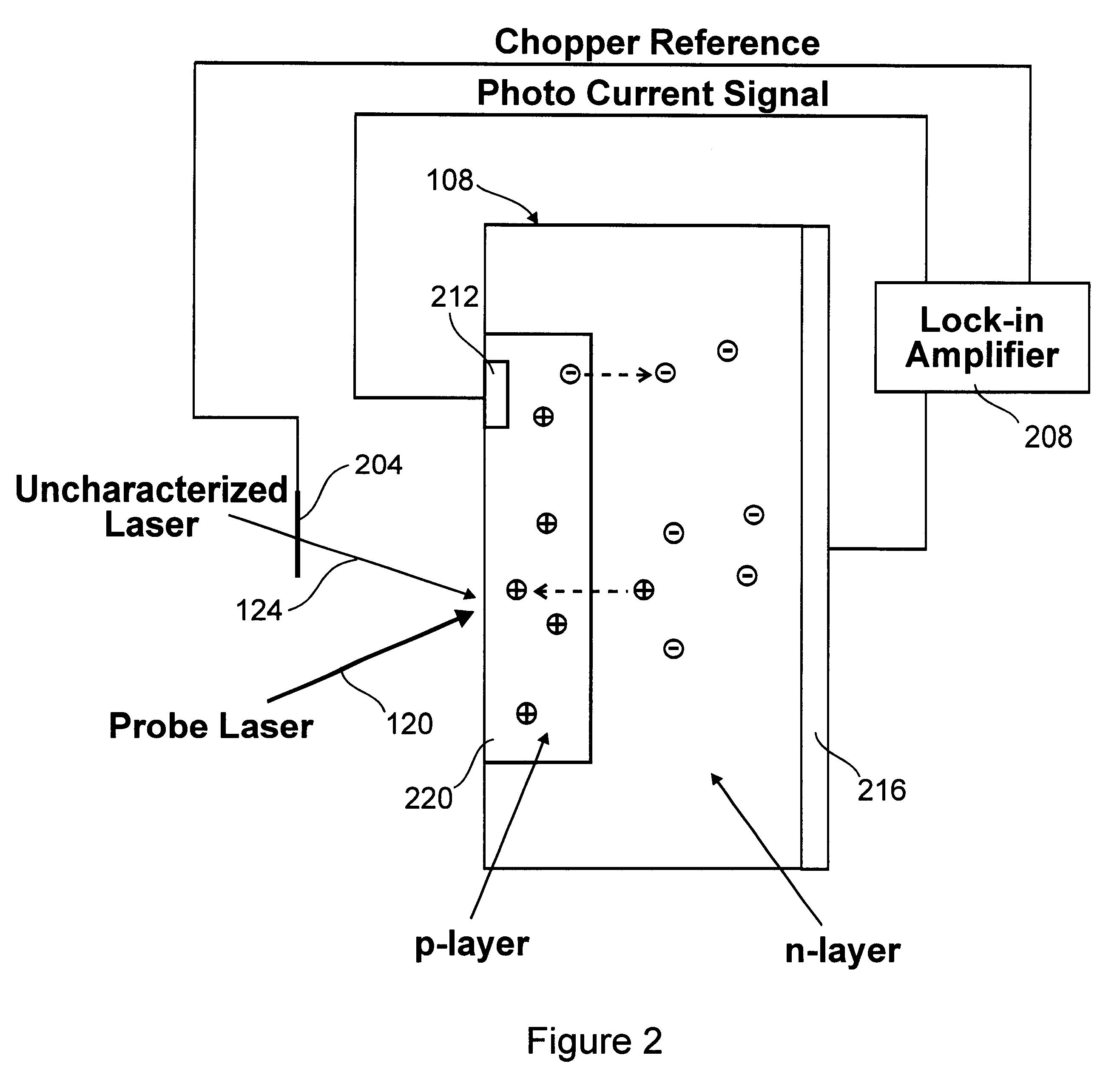Multi-wavelength cross-correlator for ultrashort radiation pulses
a cross-correlator and ultra-short radiation technology, applied in the field of radiation source calibration and characterization, can solve the problems of inability to adapt easily, non-linear crystals are expensive, and unnecessary extensive alignment procedures of conventional cross-correlators,
- Summary
- Abstract
- Description
- Claims
- Application Information
AI Technical Summary
Benefits of technology
Problems solved by technology
Method used
Image
Examples
Embodiment Construction
The present cross-correlator provides a simple device for measuring two-color cross-correlations of ultrashort radiation pulses. The cross-correlator has several advantages compared to conventional cross-correlators: (1) complicated alignment and imaging of the incident laser beams is avoided; (2) phase matching is not required; (3) a wide range of possible wavelength combinations is possible; and (4) there is no need for a non-linear crystal or a separate detector.
With reference to FIG. 1, an embodiment of the multiple-wavelength cross-correlator is shown in block diagram form. The cross-correlator 100 includes an optical delay generator 104, a radiation detector 108, a current measuring device 112, and a computer 116. A probe radiation pulse 120 and an uncharacterized radiation pulse 124 are provided to the cross-correlator so that the uncharacterized radiation pulse 124 may be characterized. The uncharacterized radiation pulse 124 is passed through the optical delay line 104 so t...
PUM
| Property | Measurement | Unit |
|---|---|---|
| wavelength | aaaaa | aaaaa |
| wavelength | aaaaa | aaaaa |
| wavelength | aaaaa | aaaaa |
Abstract
Description
Claims
Application Information
 Login to View More
Login to View More - R&D
- Intellectual Property
- Life Sciences
- Materials
- Tech Scout
- Unparalleled Data Quality
- Higher Quality Content
- 60% Fewer Hallucinations
Browse by: Latest US Patents, China's latest patents, Technical Efficacy Thesaurus, Application Domain, Technology Topic, Popular Technical Reports.
© 2025 PatSnap. All rights reserved.Legal|Privacy policy|Modern Slavery Act Transparency Statement|Sitemap|About US| Contact US: help@patsnap.com



